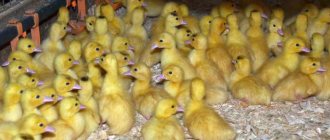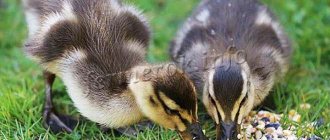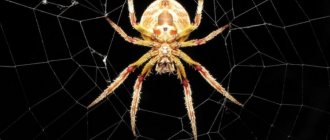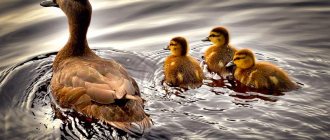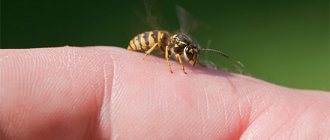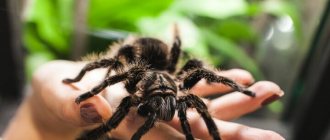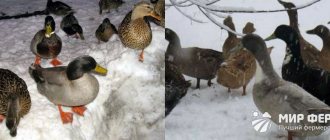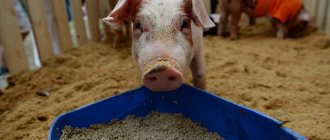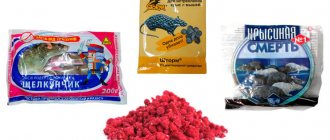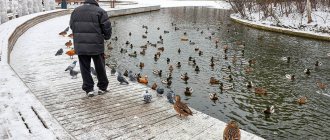Types of feed
Combined feed is a mixture of crushed feed and additives. Used to feed birds and fish of a certain species. Compound feed is divided into several groups, the composition of which is radically different from each other. There are complete feeds, concentrate feeds, premixes, protein and vitamin supplements and specialized feeds.
Feed and cereals for ducks
- Complete feed consists of nutrients and biologically active substances. Allows you to completely abandon other types of food. It has a pleasant smell and taste, is well digestible by various animals;
- Compound feed concentrates are additives to the basic diet. Their use allows you to compensate for the lack of protein, energy, fat, amino acids, minerals and vitamins. The feed is used in large farms and small individual farms;
- Protein and vitamin supplements (PVS) are a mixture of minerals, antibiotics and protein concentrates. Included in complete feeds. It is used exclusively as an additive; the manufacturer does not recommend using the BVD composition as a complete feed for ducks and cattle;
- Premixes are a mixture of minerals, vitamins, enzyme preparations and amino acids. Used as an additive to the main feed.
For each group of animals raised, specially developed feed formulas are used. On the back of the package, the percentage of ingredients and microadditives (enzyme preparations, vitamins and microelements) per 1 ton is always indicated. Farming practice has shown that non-certified feed does not give the desired result, and in some cases even harms the animal. All feed is numbered with an alphabetic and digital code. For ducks, the coding consists of numbers from 20 to 29.
What and how to feed a duck for meat for rapid growth
You can fatten ducks for meat at home using simple, inexpensive products if you plan your diet correctly. Large poultry farms practice fattening using nutritious feed and vitamin supplements.
Cereal feed
About 50–70% of the total feed in the duck menu consists of concentrates - grains of various crops. The product contains carbohydrates, proteins, and has a lot of energy necessary for the growth of the bird. The small amount of fiber in grains allows for almost complete digestion by the body.
Ducks are fed wheat, corn, barley, oats and other types of cereals. When fattening young animals, preference is given to corn (sometimes replacing it with peas), wheat and barley. These types of grains promote rapid weight gain and muscle mass.
For better eating by birds, the grain is crushed (crushed) or flattened. Good results are obtained when feeding extruded grain, a product processed under high temperature and pressure. The grain after the extruder is almost completely digested by the bird, which increases the economic feasibility of fattening.
Crushed and extruded grain is given in the form of crumbly mash.
If it is not possible to grind the grain product, it is steamed - poured with hot water and left for 5-8 hours. Steamed grain is readily eaten by adult birds and young birds.
When feeding waterfowl, milling waste is actively used: bran, flour. Bran is rich in protein and B vitamins, but contains little energy. They are introduced into the diet in an amount of 15–20%, added to mash.
Juicy feed
Grass and vegetables can make up up to half of the total weight of duck food. The products are rich in vitamins and fiber, which birds digest well.
Pets eat grass in the pasture or it is brought to them for walking and placed in feeders. Succulent, well-leafed vegetation is suitable for ducks:
- garden weeds and greens - quinoa, dandelion, gooseberry, lettuce;
- meadow grasses - young brome, ryegrass, clover, yarrow, wheatgrass;
- forage crops - alfalfa, sainfoin, timothy.
For young animals, the grass is cut into particles no more than 1 cm long. Adults are given the vegetation entirely, placed in lattice nurseries or nets (vendaces). The bird eats leaves and tender young stems without touching rough branches.
They collect duckweed from ponds for ducks. For this purpose, nets with a fine mesh are used. Vegetation, along with small aquatic insects, is laid out in wide troughs in the pens where the birds are kept. Each individual can be fed up to 50 g of duckweed per day.
In the duck garden they grow:
- fodder beets and carrots;
- fodder and ordinary cabbage;
- zucchini and pumpkin.
All vegetables are given fresh, chopped into crumbs. In winter, vegetables replace fresh grass in the diet.
Ducks willingly eat fruits: carrion apples, pears, plums and apricots (without seeds). The products do not have any special nutritional value, but they are rich in vitamins and microelements, in particular iron. When there is an excess harvest of apples, they are dried or fermented, and in winter they are fed to the livestock as a vitamin supplement.
Animal feed
In nature, ducks feed not only on vegetation, but also eat small insects, snails, and worms, that is, they consume animal protein. At home, the duck flock is offered the following food instead of live food:
- whey and skim milk are added to mash;
- cottage cheese - given to ducklings from the 3rd day of life;
- bone or fish meal - add 2-5 g per head to the mash.
Bone and fish meal can be replaced with strong meat or fish broth, boiled slaughterhouse waste (offal, blood). These products give the meat a specific smell, so they are excluded from the poultry diet 10–15 days before slaughter.
Mineral supplements
Proper feeding of ducks cannot be organized without introducing mineral supplements into the menu - chalk, shells, eggshells and table salt.
Calcium contained in chalk and shell rock is necessary for the formation of strong bone tissue and the hardness of egg shells. Sodium, obtained by the body from salt, is responsible for the proper absorption of food and maintaining water-salt balance.
Salt is introduced into the bird's feed in strictly dosed doses (from 0.5 g to 2 g per day), since its excess can cause poisoning.
Chalk, shells, and eggshells should be freely available. The bird itself regulates the consumption of this product. Some poultry farmers add pieces of charcoal and clay to the troughs, noting that the birds show interest in this type of food.
Fine gravel and coarse river sand are freely laid out for the ducks. These products are eaten by birds to improve digestion - pebbles in the stomach, like small millstones, grind coarse particles of food.
Basic set for feed
It is no secret that the food of meat and laying ducks has a different composition. Therefore, farmers must take into account the characteristics of the base ingredients when feeding poultry.
Recipes for complete food for ducks
Features of Key Products:
- Grain feed consists of ground corn and wheat. Ground grains are absorbed in the duck's esophagus by 80–90%. Ideal for meat and laying breeds. Grain feed makes up almost 50–60% of a duck's daily diet. Farmers do not recommend feeding whole grains to ducks because they are less digestible, which leads to a slower metabolism and a decrease in the growth rate of poultry;
- Cake is a production waste. Waste from sunflower or rapeseed oil crops is better suited for ducks. Peanut or soy waste is sometimes added to the feed. Farmers advise focusing on products to which you have easy access. Production waste is an inexpensive and nutritious feed for ducks;
- Juicy fruits are used for feeding during the warm period. Ducks can be given strawberries, peaches, apricots, plums, cherries, cherries and other sweet fruits. Don't forget to remove seeds from the fruit. This type of food is well absorbed by the digestive organs and saturates the body with vitamins and minerals;
- Animal feed is used for growing meat breeds. It provides a good increase in muscle mass. Dairy products are used for raising young animals. It is worth noting that the share of animal feed should not exceed 10% for laying breeds and 20% for meat species.
The nuances of keeping young and adult mullards
The species of hybrid ducks in question is an unpretentious bird. However, this does not mean that you can neglect the rules, recommendations and standards developed for keeping poultry for meat production.
For 1-7 day old young animals, a comfortable temperature regime is created and maintained - 20-23 degrees. If an additional heat source is used, such as an infrared lamp, the temperature near it should be about 29 degrees. Starting from 8 days of age, the temperature gradually decreases and reaches 18 degrees.
Also, in a poultry house containing 1-5 day old hybrids, constant lighting is required. When the young animals turn 11 days old, the duration of daylight hours is reduced to 16 hours, then weekly by a couple of hours.
Important: Birds are less disturbed when using 60-watt incandescent lamps located at 1.8 meters in height.
Bedding material is poured onto the floor, into boxes, sections and other places where the ducklings are located. It is better to use straw, hay or shavings. Sawdust is not an option, as it is eaten by ducklings. And this is one of the reasons for the bird’s departure.
Hybrid young animals grow and develop more actively with constant access to water. Although the bird does without a natural body of water, it would be useful to have a large container in the house that performs the functions of a bath.
In the summer, 3-day-old chicks are allowed on the walking area. It is unacceptable for ducklings to be exposed to rain.
Adult birds are kept almost the same as young birds. The walking area is easy to calculate. Let's say there are 10 birds in the poultry house. In this case, the area of the walking area will be 10 square meters. The stocking density in the poultry house is 3 birds per 1 sq. m.
Mandatory additives in feed
Homemade food allows you to save money on raising poultry. In addition, homemade food protects your animals from harmful additives used by unscrupulous manufacturers.
- Greens are a valuable source of vitamins E and B. The supplement is used primarily for laying ducks. Greenery has a positive effect on the health of the future brood - it grows better and rarely gets sick. It is worth noting that you cannot switch to feeding greens alone, since they are an additional component;
Homemade feed for ducks
Do-it-yourself compound feed consists of corn, wheat, oats, peas, barley, wheat bran and sunflower meal. The first thing you should pay attention to is the consistency of the food. It should not be too dry or watery. In the first case, the ducks will eat poorly and drink a lot of water, thereby weakening their appetite. Liquid diet becomes sticky and can clog the digestive organs or throat.
Scheme for preparing homemade feed
Dear visitors, save this article on social networks. We publish very useful articles that will help you in your business. Share! Click!
Norms and diets for feeding ducks of the parent flock depending on the time of year
- The first 10 days of life. At this age, the ducklings’ bodies require gentle and at the same time nutritious food. Young ducklings will be provided with the required amount of carbohydrates, proteins and fats by hard-boiled eggs mixed with herbs and boiled potatoes. Eggs and potatoes are added in a 50/50 ratio.
- On the fourth day of life, you can already add animal products to your diet - cottage cheese, milk, tremors, shells, chalk. It is worth noting that animal products in large quantities can negatively affect the well-being of the brood - diarrhea and bloating begin in the ducklings. It is recommended to gradually increase the amount of animal products;
- 10–30 days old. Experts have proven that ducks are fully formed at this age, so they should receive the maximum of useful components. For 20 days, poultry is given mixed feed, which consists of 50% corn and wheat, 20% sunflower processing waste, 5% feed yeast and 3% dry skim milk. In addition, the composition must include the following additives: 3% greens, 7–9% fishmeal. Also, do not forget about chalk and small shells;
Are you here
This information is from our Portal Consultant for feeding farm animals and poultry Denis Vladimirovich, for which we thank him very much!
Ducks are demanding in terms of feeding and housing conditions. They need water exercise. They require a large amount of water for normal digestion. A lot of water is released with droppings and during breathing, so it is beneficial to breed ducks near reservoirs with spacious walking areas and in winter.
Digestion in ducks is intense and is adapted to assimilate a large amount of plant food, mainly young greenery and vegetation of water bodies, as well as frogs, aquatic invertebrates - mollusks, worms, larvae, plankton. They have well-developed goiter and blind processes, in which active absorption of fiber occurs with the help of microorganisms.
Feeding adult ducks . The main task of proper feeding of ducks is to maintain their health, achieve high productivity, and good incubation quality of eggs. Only with standardized and adequate feeding, which fully meets the nutritional needs of laying ducks, can high egg production (up to 200 eggs per year) be achieved and year-round rearing and fattening for meat be carried out.
The high productivity of laying ducks is closely related to their fatness. With a loss of live weight, their egg production not only decreases, but also the incubation quality of the eggs deteriorates. Duck eggs are used only for incubation; they can be eaten after special cooking.
In duck farming, dry and combined types of feeding are used. In large industrial farms, dry feeding of adult ducks with granulated complete feed from automatic feeders is used, while simultaneously providing fresh drinking water and gravel.
The combined type of feeding of adult ducks is common in small duck breeding and homestead farms with one-time staffing of the flock, which determines the seasonality of egg production and the division of feeding according to the seasons of the year (in the spring-summer period there is egg-laying, and in the autumn-winter period there is no laying).
Feeding the young. For young ducks, as well as for adults, two types of feeding are used: dry and combined.
With the dry type, ducklings from the first day after hatching from the egg until the end of rearing (26 weeks) are fed with complete feed ad libitum, taking into account the norms (concentration) of nutrients and metabolic energy contained in 100 g of feed. Particularly effective are granulated feeds with a granule size for ducklings of the first age (1-20 days) of 2-4 mm, for ducklings of the second age (21-56 days) 5-8 mm.
The growth rate of ducklings at the age of 1-3 weeks is provided by feed with a high level of crude protein (18%) and a moderate content of metabolic energy (1172 kJ) per 100 g. Recipes for feed for ducklings at the age of 4-8 weeks are characterized by a lower concentration of crude protein (16%), but with a higher energy nutritional value (1213 kJ), which promotes fat deposition and improves the presentation of carcasses (see Table 183).
Approximate norms for feeding complete feed to young Peking ducks per head per day:
| Age, weeks | Norm, gram | Age, weeks | Norm, gram |
| 1 | 40 | 6 | 230 |
| 2 | 70 | 7 | 250 |
| 3 | 115 | 8 | 255 |
| 4 | 185 | 9 | 230 |
| 5 | 215 | 10-26 | 230 |
At 8 weeks of age, ducklings destined for meat are killed, and some are transferred to the replacement group. After 8 weeks, replacement young animals are fed with mixed feed with reduced nutritional value, containing 260 kcal (1088 kJ) of metabolizable energy and 14% crude protein per 100 g, and are transferred to a limited feeding regime until 26 weeks of age (before transferring to the diet of adult ducks), the norm feed is 230 g per head per day.
Source
Factory feed
Feed manufacturers produce different types of their products. They regularly conduct research to improve the effectiveness of feeds for certain species. Factory-made products are conventionally divided into age categories:
- Compound feed "PK-21" is intended for young offspring of ducks aged 1–3 weeks. The daily feed intake is 20 grams per duckling. The manufacturer recommends increasing the daily intake by 2 grams daily. The composition of “PK-21” completely covers the poultry’s need for energy, vitamins and biologically active substances. Farming practice has shown that additives in the form of greens can enhance the effect of the PK-21 formula. The average daily increase in live weight of a duckling is 20–25 grams. By the end of 3 weeks, food “PK-21” allows the duckling to gain more than 550 grams;
Compound feed PK-21 for ducks aged 1-3 weeks
- Compound feed "PK-22" is a growth feed for ducklings. Provides rapid growth and weight gain. The composition includes nutrients that increase the rate of weight gain up to 40 grams per day. The formula is suitable for feeding young animals over 20 days of age. Can be used with chopped herbs and fresh herbs. The presence of greens in food improves the digestibility and absorption of food. Composition “PK-22” is started to be given at 80 grams per day. The dose is increased daily by 2–3 grams. By the end of feeding, the specific weight of the duck reaches more than 2.5 kg;
- Compound feed "PK-23" is a complete composition for raising young animals. The PK-23 formula allows young animals to better prepare for the transition to an adult flock. The manufacturer recommends using its products from 9 to 26 weeks of duck life. It is worth noting that PK-23 feed is the only formula where there is no need to increase the dose. On average, each individual consumes about 160–170 grams of food per day. Vitamins and minerals contribute to the rapid formation of the duck’s reproductive system and prepare it for laying eggs. It is given wet;
Scheme of feeding ducklings with compound feed
- Compound feed "PK-23" is a formula for feeding laying ducks. The dose depends on the amount of grass feed in the laying hen’s diet and can range from 150 to 250 grams per day.
Have you ever experienced unbearable joint pain? And you know firsthand what it is:
- inability to move easily and comfortably;
- discomfort when going up and down stairs;
- unpleasant crunching, clicking not of your own accord;
- pain during or after exercise;
- inflammation in the joints and swelling;
- causeless and sometimes unbearable aching pain in the joints.
Now answer the question: are you satisfied with this? Can such pain be tolerated? How much money have you already wasted on ineffective treatment? That's right - it's time to end this! Do you agree? That is why we decided to publish an exclusive interview with Professor Dikul, in which he revealed the secrets of getting rid of joint pain, arthritis and arthrosis.
Consumption standards
The norms for feeding ducks a feed mixture per day depend on their age and are always marked by the manufacturer on the packaging. On average, per 1 head up to 45 days old there is the following amount of useful components (per day):
- crushed wheat - 22 g;
- crushed barley - 30 g;
- crushed peas - 12 g;
- flaxseed or soybean cake - 8 g;
- soybean meal - 5 g;
- meat and bone meal - 3 g;
- fish meal - 9 g;
- feed fat - 4 g.
After 45 days, the amount of some products in the ducks’ diet is increased, which means the daily menu will be different. For example, instead of 12 g of crushed peas, you can give the bird 20 g of this product, it is useful to increase the amount of flaxseed meal by 2 g, and feed fat by 1.5 g. At the same time, the amount of wheat is reduced by 2 g, and fish meal by 7 g (adult ducks do not need more than 2 g of this supplement per day).
If you are not using complete feed, then you will have to add some minerals to the feed mixture (in mg per 1 kg of feed mixture):
- iron - 20;
- manganese - 45;
- iodine - 1.0;
- copper - 2.5.
Important! When calculating the required amount of additives, you should always rely on the manufacturer’s recommendations, since an excess of nutrients can lead to irreversible consequences in the health of birds.
Feed for ducks
It is profitable to raise ducks as poultry, since the diet can be very diverse from the ingredients that are available. They are suitable not only for cereals, but also for vegetables, as well as animal feed.
It is possible and necessary to make food for ducks with your own hands, since only in this case the breeder will be confident in its rich composition, suitable for raising meat and egg-laying birds. Much depends on whether there is the possibility of grazing the herd near a natural body of water. There, the ducks themselves find insects, small fish, as well as useful herbs and other vegetation. If this is not possible, everything missing will have to be introduced into the diet artificially.
Optimal diet for ducks
The principles for constructing a menu for domestic ducks are as follows.
Grain feed
Among all types of cereals, wheat and corn are best suited for ducks. The benefits of using such a base are unconditional, since the digestive tract of birds is designed in such a way that this food will be digested almost without residue (about 80%).
It is recommended to fill up to half of the daily food intake with cereals. To increase satiety, oats are added. You can get the right amount of fiber with the help of millet; it should be added in an amount of 20% of the daily requirement.
Important! Since coarse whole grains are less digestible than ground grains, not only corn, but also all other grains are ground for feed for ducks.
Cake
If there is an oil mill or sugar factory nearby, purchasing waste from their production will not be difficult. This is a cheap but extremely useful nutritional supplement. Sunflower, rapeseed, soybean, peanut, and beet cakes are added little by little at any time of the year. Bran also belongs to the same valuable category of ingredients.
However, both components cannot exceed 20% of the total amount of food eaten. They contain too much fiber, the excess of which is bad for the digestion of birds.
Vegetables, herbs and root vegetables
Ducks really like juicy chopped vegetables. They can be added to feeders at any time of the year. But usually vegetables are added to food in the warm season, since in winter they are much more expensive.
On a note. Not only the vegetables themselves (carrots, zucchini, pumpkin, potatoes, beets, etc.) are used, but also grass (alfalfa, clover). Birds can obtain some of these supplements on their own on natural pastures. But in any case, it is necessary to constantly ensure that the ducks receive succulent additives regularly.
Combined mixtures
Combined feeds are often used as feed for ducks. They are prepared from grains of various types of cereal plants. In order not to calculate every day how many grams the ducks need of this or that grain, the farmsteaders immediately prepare a large amount of the mixture. Store feed for ducks in plastic containers in dry rooms. The following cereals are used:
- corn: it is a source of not only protein, carbohydrates and fiber, but also carotene; corn is recommended for young animals for fattening, individuals that make up the parent herd; carotene promotes the full development of reproductive functions in females and drakes;
- barley: the protein found in barley is absorbed by the body more easily than the protein found in wheat; in addition, the grain contains a lot of iron, magnesium, potassium and calcium; barley must be crushed, because the grain shell is difficult to break down in the gastrointestinal tract of the duck;
- wheat; in addition to proteins, it contains vitamins “B” and “E”; substances normalize the functioning of the hematopoietic organs and nervous system; regulate hormonal levels; grain is given whole or crushed; sprouted wheat is useful;
- oats: fattening ducks will be ineffective without oats; it promotes accelerated weight gain in ducklings; oats contain a lot of fat; ducks are given peeled grains;
- peas; it contains a large amount of protein; give peas in small quantities so that the birds do not become obese; legumes stimulate laying in laying hens and cause sexual activity in birds; Peas are introduced into feed only in spring and summer.
Some recipes for grain mixtures call for the use of wheat or corn flour. It cannot be given as a separate food. Flour can clog the sinuses of the respiratory tract. It is added to wet mash. Flour is especially useful for young animals in the first week of fattening.
Protein additives are added to duck feed. It is recommended to use waste from oilseed production. Among them are sunflower cake, soybean pulp, peanuts, and corn. Wheat bran and feed yeast are useful. It is recommended to grind pulp and cake so that they are better absorbed by the body. Their number is limited. Food additives can cause obesity.
For the full formation of the skeleton and better growth of muscle tissue, animal products are added to the combined mixtures. Chicks are given a boiled egg and cottage cheese for 1 week. Mash is made using skim milk or yogurt. At week 2, fish and bone meal are introduced. If there is a clear lack of calcium, minced boiled fish is recommended. Some breeders add a little minced beef to duck feed as an additive.
Duck diet
Homemade combination mixtures may include succulent foods. They are added to the grain before serving. Many homesteaders are interested in whether it is possible to feed ducks vegetables from the garden. Experts say that vegetables from the garden are very beneficial for ducks at any age. They are given cabbage, zucchini, pumpkin, carrots, and beets. Young animals gain weight well if they are fed boiled potatoes.
In the summer, the livestock is walked on an area with alfalfa and clover. Dandelions and nettles are beneficial for ducks, but the nettles must first be steamed and chopped. Podvortsy add willow, cherry, and currant leaves to grain mixtures. Berries are useful, but the seeds must first be removed.
As duck feed, combination mixtures are often purchased from manufacturers. They are balanced in all nutrients. They are easy to use; you don’t need to add any grains or succulent feed to them. It is recommended to fatten broiler ducks using commercial feed. This technique is cost-effective for large poultry farms with large numbers of livestock.
Feed for ducks: basic rules
Experienced poultry farmers recommend forming a duck diet based on the following conditions:
- To improve egg production, it is necessary to add finely chopped greens to the feeders. It contains a lot of vitamins E and B, which are essential during laying, including for subsequent hatching. You shouldn’t be too zealous either, since the basis of a complete diet at any time of the year is cereals.
- When birds are raised for meat, their diet depends greatly on age. The first period is intensive growth of chicks. At this time, the share of animal feed can account for up to a third. But before slaughter, the bird is fed so that its fat mass increases. Dairy products, as well as legumes and ground oats, come to the rescue here.
- There is no need to grind the grain too finely. The sticky mass can clog the beaks, or even get stuck in the throat. The food should be moist, but coarse enough to be pushed well through the esophagus. Boiling porridge is an outdated practice that has not worked well. When cooked, grains absorb water, losing calories per unit volume. As a result, the bird eats the same amount, but receives fewer calories.
- You can also give dry feed. In this case, there should always be a drinking bowl at the feeding site. Today, some farmers specifically purchase granulators - equipment that allows them to form special granules from dry food. Ducks drink a lot with this diet. The method of soaking dry food in water is no worse, but the birds drink less. Vegetable supplements and grass during such feeding should be placed side by side in a separate container.
Attention! It is very important to monitor the cleanliness of the water in drinking bowls. Stagnant water or dirty dishes can cause the spread of serious diseases.
Offspring reared naturally (by a brood hen)
The hen warms and protects the eggs throughout the entire period of hatching the goslings. If the incubator turns the eggs on average once every two hours, then the hen does this up to 50 times a day, which is 4 times more often. The result of her efforts is immediately visible - the hatching of young animals is higher. The temperature and humidity under the goose are optimal for eggs.
Nature has designed it so that the hen provides uniform heating, periodic ventilation and does not dry out the eggs. But, as with everything, there is one drawback - no more than 15 eggs can be placed under a goose, otherwise the quality of hatching decreases.
Having entrusted the incubation to the hen, all that remains is to take care of the bird itself. It is necessary to provide free access to food, water and the opportunity to swim. There have been cases when particularly impressionable hens were afraid to get off the nest and get to the feeder, which could have led to the death of the hen if not for forced feeding.
The importance of daylight hours for chicks up to a month old
Regardless of how the chicks were bred, it should be taken into account that the length of daylight directly affects the development, intensity of weight gain and health of the goslings.
During the first days (about 7 days), the chicks’ home should be illuminated around the clock; this will allow them to quickly settle in and easily find food and water. It’s still worth separating day and night, even if you don’t turn off the lights, but only dim them, but there should be a difference.
After a week, daylight hours can be reduced to 16-17 hours. But not sharply, but gradually, daily reduce the time of intense lighting by about 30-40 minutes. By bringing the period of the day to 16-17 hours, you can adhere to this schedule until you are sent to slaughter.
Goslings hatching. First day of life
When should chicks fledge?
Plumage in goslings occurs gradually. From the moment of hatching to full plumage, approximately 75-80 days pass.
For the first 20 days, babies walk covered in down, the next 10 days you can see how tail feathers appear (on the tail), after another 10 days the wings begin to feather, these feathers are called terry feathers, then gradually and more or less evenly, by the age of 2-3 months, full plumage occurs .
Nutritional features, feeding rules for musky ducks
Musk ducks or indo-ducks are distinguished by their unsurpassed omnivorousness. It is very difficult to make a mistake with their feeding, because the bird is ready to eat everything that the owner has included in the duck mash. For a healthy diet, you need to form a diet primarily from wet mixtures, which include grains, as well as juicy vegetable and meat additives.
Favorite foods of Indian ducks:
- grass;
- finely chopped beet tops;
- feed from several types of cereals (necessarily soaked in water);
- waste from the kitchen (cooked meat scraps, boiled potatoes);
- ground corn.
Muscovy ducks do not really need a pond. If there is, that’s good, because then the herd will be able to obtain a considerable part of its diet on its own. Insects and even worms are caught very cleverly by both drakes and chicks. If there is a natural or artificial pond with a variety of living creatures next to the poultry house, then you can save a lot on feeding costs.
Interesting. By the way, by crossing ordinary and musk ducks, interspecific hybrids are obtained, for example, mulard, which will not produce offspring, but will grow larger than its parents.
What feed to feed ducklings
The peculiarity of feeding ducklings is that up to 2 months their growth occurs very rapidly, and for this they need a special diet rich in protein and vitamins. Compound feed balanced in composition is crucial for the growth of ducklings.
A special diet rich in protein
1- 10 days
Strong and healthy ducklings can feed themselves. But sometimes you have to feed the weakest ones through a pipette on the first day. This is done only on small farms. With a large population, there is simply not enough energy and time to do this.
On a note. For a few days after hatching, it is enough to give only a finely chopped egg and nothing else. This is an ideal starter feed for ducklings. It is also the most accessible. From the 5th day of life, ducklings must be given low-fat cottage cheese. At this time, the feeding frequency is every 2 hours, only for non-meat breeds - every 3 hours.
10-30 days
10 days after hatching, normal feeding is started and food for ducklings begins to be served in special feeders, but in no case together with adult birds.
The menu includes fish or bone meal, which should account for about 7% of the serving. The rest consists of ground grains, as well as cakes (up to 20%).
Attention! To further speed up growth, yeast is often added to food.
If the diet at this time is chosen correctly, then changes in the appearance of the ducklings will be noticeable to the naked eye every day. Their weight also changes noticeably.
After 30 days
Already at the age of 1 month, ducklings eat the same as adult birds. If there is a free range nearby where you can catch insects or fry in a pond, then you no longer need to add animal additives to the food. But not for meat breeds, which require much more protein throughout their lives than others. The optimal feeding regimen is 2-3 times a day at regular intervals.
Mulards - characteristics
Brief description of the growing object.
The breed was created on the basis of musk ducks, domesticated at one time on the American continent. Ducks of European and Asian selection also took part in the process of creating duck-geese.
As a result of crossing parental forms, a bird was obtained that adopted high egg production, a neat exterior and an instinct for incubation from musky ducks, and high meat qualities, in particular rapid weight gain, from locally selected ducks (mainly from meat-producing breeds).
Moreover, thanks to the influx of blood from the musk breed, European ducks began to produce less fatty carcasses and began to hatch eggs more willingly and take care of their offspring.
Mulard ducks are deservedly considered to be unique birds. With a lot of advantages, they are not without disadvantages. One of them is the lack of ability to further reproduce.
The fact is that we are talking about sterile hybrids. And you shouldn’t believe sellers who claim that their hybrids are the best successors of the family.
The word “hybrid” indicates that the bird was created with the aim of obtaining the maximum effect of heterosis in meat productivity. Just imagine, with an insignificant feed consumption per unit of live weight gain, a 2-month-old bird reaches slaughter condition or 4.5 kg weight.
In many meat qualities, popular hybrids are not inferior to Peking ducks.
Advice! Do you want your meat productivity indicators to move in the right direction? Force feed the bird and make sure it moves as little as possible.
In this simple way, you will reduce feed costs, while at the same time speeding up the time for obtaining marketable young animals that produce carcasses with tender meat.
One of the directions for growing mulards is to obtain fatty liver, which is an ingredient in foie gras pate. The birds are intensively fed and kept in cramped cages. We will talk about forced fattening below.
A characteristic feature of the breed is the rich palette of plumage. There are dark gray and piebald mulard ducks, white individuals with dark spots on different parts of the exterior, etc.
It is very difficult to distinguish a female from a drake by its exterior. The only thing that can be said is that males are 0.5 kg heavier than females of the same age.
Types of feed
Several types of feed are used to feed ducks. Let's take a closer look at them.
Full
According to the name, this type of combined feed contains all the substances necessary for birds. It is intended for feeding in its pure form, and its use allows you to avoid additional feeding.
It turns out that this type of food contains both proteins, carbohydrates and fats, as well as the necessary groups of vitamins, as well as macro- and microelements. It is worth taking care to stock up on enough feed for the cold season, which will be enough for the full raising of ducks.
Compound feed concentrate
Concentrated feed is not a complete feed and cannot be used in its pure form. It can be compared to a dietary supplement that is a source of vitamins and minerals. The concentrate is used in combination with juicy and roughage feed, which, when entering the bird’s body, triggers the process of proper absorption of the vitamin component.
Protein and vitamin supplements
This variety is also called a “balancing supplement”, as it allows you to regulate the amount of proteins and vitamins in your daily diet. It is a mixture of protein, vitamins and mineral salts, so it is actually a concentrate that cannot be given in pure form or in large quantities.
This additive is most often used to create combined feeds at home. That is, the farmer grinds the grain according to the recipe, after which he saturates it with a protein and vitamin supplement, obtaining a complete feed.
Premixes
This variety can hardly be called compound feed, since it is added to the general menu in small quantities (no more than 5%).
It is a homogeneous mixture that consists of minerals, vitamins, antibiotics, enzymes, chalk, as well as crushed bran.
The composition of premixes may be different. This mainly depends on the purpose. This supplement can be used to prevent diseases, saturate the menu with vitamins or minerals.
How to properly maintain
Experts in numerous videos claim that ducklings need warmth. When raising chicks at home, it is necessary to equip the poultry house with special equipment.
You can use some tricks:
- You can construct a wooden box by placing it on stands.
- The inside should be lined with foam plastic.
- Place a container filled with hot water in the drawer. Volume – 10 liters. The top of the box should be covered with a blanket or pillow to provide thermal insulation.
- A hole should be cut in the side wall through which the ducklings can get to the heating pad.
This design can retain heat for 8 hours. In the first 7 days of life of young chicks, a high temperature (28-30 degrees) should be maintained on the floor. After two weeks, the level must be reduced to 22 degrees. In three - up to 16.
As numerous videos show, the easiest time to care for little ducklings is in the spring months. For ducks, it is enough to fence off a space in the yard. The main thing is to ensure that the chicks are protected from drafts.
Wild ducklings are partial to water. Numerous videos serve as excellent proof of this. However, experts do not recommend allowing them near water bodies until they are 20 days old. If the chicks start swimming in cold water, they may catch a cold. Therefore, it is enough to place a container of water in the duck house.
Supplements
Supplements include foods rich in vitamins, minerals or other beneficial compounds that improve the functioning of the immune system and also accelerate the growth and development of poultry:
- greenery. In the warm season, ordinary and valuable herbs are extremely healthy food for ducks, as they contain vitamins E and B. At the same time, the bird receives succulent food, which is digested faster and also saturates the body with moisture;
- fish flour. It is an affordable source of animal protein. It also contains essential fatty acids and essential amino acids (lysine, threonine, etc.). There is also a mineral component, which is represented by iron, phosphorus and calcium;
- chalk. A cheap source of calcium, which also helps digest tough foods;
- feed yeast. A source of vegetable protein, as well as valuable macro- and microelements: iron, potassium, magnesium, selenium, sodium, nickel, chromium.
GOST is the head of everything
The second most important, no matter how trite it may be, is the state standard. Since feed is produced on an industrial scale, all manufacturers are required to adhere to the requirements established for their products
Basic standards in this area are developed in accordance with the recipe created by the All-Russian Research Institute of Feed Industry. These include:
- GOST 18221 – for poultry,
- GOST 32897 – for fur-bearing animals, rabbits and nutria,
- GOST 9268 – for cattle,
- GOST R 50257 – for pigs.
DIY duck feed
We will present recipes for complete feed that can be prepared at home.
For ducks
- corn flour;
- wheat bran;
- green mass (nettle, clover, alfalfa, willow leaves).
Please note that this type of feed can only be prepared in the warm season.
In winter, you should not use dry greens, as they lose some of their vitamins, which means that the mixture must be supplemented with fortified supplements.
- Take a 10 liter bucket and fill it with green mass.
- Then fill it with hot water (not boiling water) and wait half an hour.
- Then add 0.5 kg corn flour and 1 kg bran. Mix thoroughly. The feed should be thick.
VIDEO: HOW TO MAKE DUCK FOOD This feed option is suitable for month-old ducklings and mature ducks. If you intend to use it for younger individuals, then the greens should be chopped beforehand.
For Muscovy ducks
- whole wheat - 250 g;
- ground corn - 100 g;
- oats - 400 g;
- wheat bran - 50 g;
- feed chalk - 20 g;
- small shell - 30 g;
- fish meal - 20 g;
- premix - 19 g;
- table salt - 1 g.
- Combine all ingredients in the indicated dosage and mix. In total you should get about 0.9 kg of feed.
- For convenience, you should add about 100-150 ml of warm water so that the small components stick to the larger feed and do not remain on the bottom of the container.
Muscovy duck This combined option allows you not only to saturate the ducks’ body with all the necessary nutrients, vitamins and minerals, but also to save a considerable amount on feeding, since most of the ingredients are affordable.
agronomu.com
Feeding the Mulards. Balanced diet for quick weight gain at home
To achieve rapid weight gain in mulards, it is necessary to provide them with proper and balanced nutrition. Required Products:
In 4 months, individuals with proper feeding and care gain weight of about 4 kg. It is 4-month-old ducks, maximum 6-month-old ones, that are the most rational for slaughter: subsequently, weight gain is significantly reduced with the same feed consumption.
